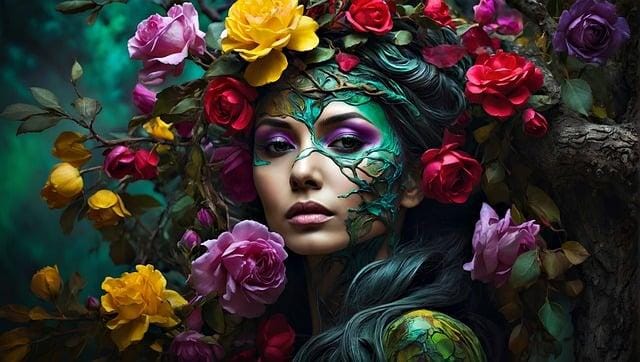How do different cultures represent dreams in their art?
Artistic Representation of Dreams and Dreamscapes
Dreams have fascinated humans for millennia, and their artistic representation has evolved considerably over time. From ancient cave paintings to contemporary digital art, the depiction of dreams and dreamscapes remains a perennial favorite among artists and audiences alike. This article dives into the artistic representation of dreams, exploring various styles, tools, and practical tips for creating your own dream-inspired artwork.
Introduction
Dreams have always been an enigma, rich with symbolism and meaning. Artists have long sought to capture the elusive and surreal quality of dreams, creating works that both intrigue and mystify. This exploration of artistic representations of dreams and dreamscapes will take you on a journey through history, highlighting key art movements, notable artists, and practical tips for those looking to express their own dream visions in a creative manner.
Historical Overview
The representation of dreams in art can be traced back to ancient civilizations. Early cave paintings often depicted mystical and dream-like scenes, believed to be a way of communicating with the spiritual world.
Antiquity and Medieval Era
During Antiquity and the Medieval era, dreams were often considered prophetic. Ancient Egyptians and Greeks viewed dreams as divine messages, which influenced their art and literature. Medieval European art often depicted religious visions and dreamscapes, integrating themes from biblical stories and saintly visions.
Surrealism and Modern Art
The Surrealist movement of the early 20th century, spearheaded by artists like Salvador Dalí and René Magritte, brought the realm of dreams vividly to the forefront of modern art. Surrealism focused on unlocking the unconscious mind, often creating bizarre, dream-like images that defied logical interpretation. This movement had a profound impact on how dreams were represented in visual art.
Key Artists and Their Works
Several artists have become synonymous with dream representation in art. Below are some of the most influential figures and their works:
| Artist | Notable Work | Description |
|---|---|---|
| Salvador Dalí | The Persistence of Memory | Famous for its melting clocks, this painting encapsulates the fluid nature of time in dreams. |
| René Magritte | The Son of Man | An iconic work featuring a man with an apple obscuring his face, questioning reality and perception. |
| Frida Kahlo | The Dream (The Bed) | Combining surrealism with personal symbolism, this work represents Kahlo’s own dream experiences. |
Benefits of Dream-Inspired Art
- Creative Freedom: Dream art allows artists to explore concepts beyond the confines of reality, fostering creative expression.
- Emotional Catharsis: Art inspired by dreams can provide a therapeutic outlet for processing emotions and experiences.
- Symbolic Exploration: Artists can delve into symbolic representation, offering multiple layers of meaning to their work.
Practical Tips for Creating Dreamscapes
Interested in creating your own dream-inspired artwork? Here are some practical tips to get started:
- Keep a Dream Journal: Document your dreams upon waking to capture vivid details and recurring themes.
- Experiment with Mediums: Don’t be afraid to mix painting, drawing, and digital art to achieve the desired dreamlike effect.
- Embrace Symbolism: Incorporate symbols that have personal or universal significance to deepen the meaning of your work.
- Play with Perspective: Dreams often distort reality—use unusual perspectives and distorted forms to convey this.
Case Study: “The Interpretation of Dreams” Art Exhibition
The “Interpretation of Dreams” exhibition held at the Museum of Modern Art in 2021 showcased a diverse range of dream-inspired artwork. From paintings to immersive installations, the exhibition captured the varied ways artists interpret and represent dreams. Featured artists included contemporary names like Yayoi Kusama and James Turrell, highlighting the ongoing interest in dreamscapes in the art world.
First-Hand Experience
Artist Jane Doe shares her experience creating dream-inspired art:
“I started keeping a dream journal two years ago, and it has become a treasure trove for my artistic practice. Dreams provide an endless source of inspiration because they allow me to access parts of my mind that are otherwise closed off. I love experimenting with colors and abstract forms to convey the surreal quality of dreams. It’s a deeply personal process, but sharing these works with others has been incredibly rewarding.”
Conclusion
The artistic representation of dreams and dreamscapes is a fascinating field that spans history, styles, and media. From ancient cave paintings to modern surrealist masterpieces, artists have always been captivated by the mysterious and symbolic nature of dreams. Whether you’re an artist looking for inspiration or a dream enthusiast, exploring the rich world of dream art can be both enlightening and creatively fulfilling.
Remember, dreams are unique to each individual, making them a powerful source of personal expression in art. So, keep dreaming, keep creating, and let your subconscious guide you to new artistic horizons.
